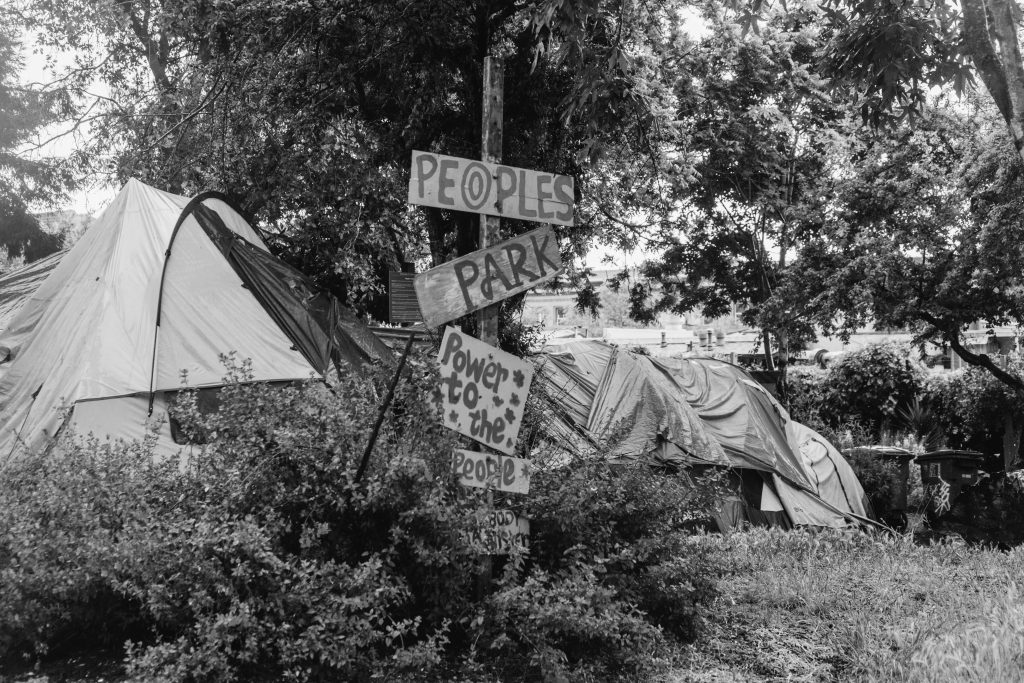
In anticipation of this week’s UC Board of Regents meeting, the People’s Park Historic District Advocacy Group provided the regents with specific comments on UC Berkeley’s Final Environmental Impact Report, or EIR, which is required for approval of the campus’s Long Range Development Plan, or LRDP. The EIR is a review of potential environmental impacts of proposed projects required by the California Environmental Quality Act. Ironically, UC Berkeley describes the LRDP as “one of our most important tools for responsible long-term campus planning and for being a good community partner.”
Our detailed remarks reflect the outlook of the 120 signers of our open letter to the regents; the more than 100 residents who communicated with Berkeley City Council on this issue; the coalition of neighborhood groups; the tenants of 1921 Walnut St. and their supporters; and other concerned Berkeley residents.
To put it bluntly, Berkeley citizens feel besieged by the overreach of UC Berkeley. Our concerns include the campus’s surreptitious adding of students beyond its former LRDP, its lack of housing for those students (least among all UC campuses relative to the student population), its gobbling up of property in the city, its monetization of public property in its new projects and its apparent disregard for tenant rights as well as Berkeley’s historical and cultural legacy, parks and open spaces.
Our outrage is compounded by the arrogance and indifference of UC Berkeley administration. We see the university leaving behind its mission of public service as an institution of higher learning to become increasingly like a rapacious corporation within our midst.
UC Berkeley’s LRDP implies ballooning enrollment and further expansion projects without providing housing for its present or future student population, creating pressures in the city that lead directly to displacement of current residents, many of whom are longtime citizens of Berkeley, low-income tenants and underrepresented minorities. This incremental process goes largely unnoticed (unless you are a victim of it), but it becomes glaringly apparent when its total impact is surveyed.
“Berkeley needs more housing. However, such housing should be affordable and should be built in appropriate locations.”
The campus’s Project #1 (known as Anchor House, which includes the property at 1921 Walnut St.) and Project #2 (the development of the People’s Park site) will demolish historic buildings, eliminate affordable and rent-controlled housing and destroy a park and open space. In their place, luxury and market-rate housing and commercial space will be erected.
The ethical stance of the university is absolutely under question. For example, in the case of Project #1, Capital Strategies (the aptly named planning and development department at UC Berkeley) has teamed up with the Helen Diller Family Foundation (the project’s financial contributor), which is directly connected to the Prometheus Real Estate Group and is one of the largest funders for defeating statewide rent control initiatives. Their joint project will evict longtime tenants of a rent-controlled apartment building.
The destruction of People’s Park would forever erase an area of refuge in times of wildfires, earthquakes and pandemics, as well as prevent its preservation as a site of historical and cultural legacy. UC Berkeley’s final EIR essentially dismisses serious consideration given to the alternative of “No Project,” a no-build option for People’s Park that would preserve a valuable public open space and an official city landmark.

The city of Berkeley and Save Berkeley Neighborhoods filed a lawsuit in June 2019 against UC Berkeley for increasing student enrollment by 33.7% without a proper environmental review under its LRDP and accompanying EIR. An Alameda County Superior Court judge ruled July 9, 2021 that UC Berkeley’s environmental analysis of the enrollment increase was “legally insufficient.”
However, in a closed session, Berkeley City Council voted to approve a settlement agreement. This decision is in direct violation of the Brown Act because it was enacted in closed session, never announced or debated in open session and never even disclosed to the public for comment or consideration, except by means of comments made by city officials after the fact. Therefore, this unlawful decision should not have been part of any decision by the regents to approve the 2021 LRDP.
Berkeley residents value the presence of UC Berkeley as an institution of knowledge and public service, but they see their city being increasingly preyed upon by a coercive and unyielding corporation-like entity with ambitions designed to trample native gardens, user-developed open spaces, tenant rights, community and neighborhood interests, environmental values and quality of life in the city.
UC Berkeley originally took the land of People’s Park from Berkeley residents. In essence, it plans to take it again. A life was lost in the original struggle over the park. Our fear is that mounting opposition will again result in legal delays and costs, in addition to disruptive demonstrations and extra policing costs.
Berkeley needs more housing. However, such housing should be affordable and should be built in appropriate locations. Monetization of public spaces through the inclusion of rental and commercial space should not be a feature of any UC Berkeley projects. Let private enterprise be the function of local business; let public education be the entire focus of the university.

The People’s Park Historic District Advocacy Group brings together historians, preservationists, students, neighbors, and concerned citizens to document and preserve the open space of People’s Park and the historic resources encircling it.
